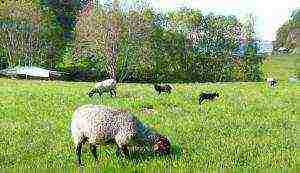The variety for cultivation in the Leningrad region must be ultra-early or early. Well, or at least medium early. The number of days from germination to harvest should be indicated on the seed bag, preferably 60 to 90 days. Early varieties for household plots are not as productive as those found on the market, are smaller in fruit weight, less transportable (thin crust), and are unsuitable for long-term storage. But they have the main advantages - they have time to mature in the garden in mid-latitude conditions and are very sweet and tasty.
The simplest and most common variety is Ogonyok, but very small. Good results are obtained with the varieties Shuga Baby, Pekinskaya Radost (this variety comes in several more varieties, and all of them are early).
For a change, you can choose, in addition to the earliest, several varieties of different colors (from dark green, to striped and even yellow), and there are some options in shape and size. To be on the safe side, in order to have time to harvest before the autumn frosts (and we have them already in August), watermelons are grown as seedlings.
The best seedlings are about a month old. Considering that the seeds germinate for about a week, and knowing the approximate time for planting seedlings, it is not difficult to calculate when the seeds should be sown. For open ground, seedlings in mid-latitudes are sown in the last days of April. For greenhouses, if planted, as usual with us, after the May holidays, it is necessary to sow in early April.
Older seeds are believed to produce plants with more female flowers, but this is not at all important. Both fresh and old seeds are able to give a good harvest, the watermelon is able to regulate the number of ovaries by itself, depending on the growing conditions.
The soil is prepared nutritious and loose: turf, humus soil, peat, sand, and ash - glass, and superphosphate - st. spoon, 1 bucket of soil.
It is better to sow seeds at once in large half-liter glasses or pots, optimally 10x10 cm, it is possible for safety reasons if there is a supply of seeds in several pieces in one pot.
It is better to sow with hardened and germinated seeds. To do this, they are heated for a couple of days at a temperature of 50-60 * C, then for about 10 hours they are cooled at a temperature close to 0 * C (it is possible in the refrigerator, but not in the freezer). The temperature sequence can be repeated for several days for reliability. And only then the seeds are placed in a moist substrate for germination. Are sown - when they begin to hatch.
The sowing depth is 3-4 cm, it is better with the sharp tip of the seed downwards, so they sprout faster. When they ascend - leave the strongest, 1 per pot.
By the time of planting, the seedlings should have 3-4 true leaves on each plant. Older seedlings do not tolerate transplanting well.
You can grow seedlings both in an apartment on a windowsill and in greenhouses and greenhouses. When seedlings appear, the temperature drops briefly so that the seedlings do not stretch, to 16-18 * C, and then it is maintained above 20 * C during the day, and about 18 * C at night. If the seedlings are not in direct sunlight, they must be illuminated, for example, with LED lamps or fluorescent lamps.
From germination to harvest, watermelons need dry air all the time. Watering should also be very moderate, warm water. A week after the emergence of seedlings, the seedlings can be regularly fed with complex fertilizers with the addition of organic matter, after 10-14 days. When planting, the seedlings may feel bad for a while, and at first they cover it until the leaves rise.
Choosing the right place for landing is a very crucial stage! This should be a fully lit area. A watermelon will not grow under a wall or under a fence. He does not like cold winds either.Therefore, on the north side, you can plant a curtain of tall plants, such as corn. Heavy, poorly heated soils, high standing groundwater are unacceptable.
Fresh manure is also not suitable for planting. It can be applied in the fall, along future rows. Therefore, they fill in high ridges, ridges, and if the site is dry, fill the trenches with a mixture of turfy soil and humus, always with the addition of sand. They say that the more sand, the sweeter the watermelons will be. Do not forget to apply phosphate fertilizers and ash to increase yields.
Watermelons are best planted after legumes, grains, tomatoes and peppers, and cabbage. When planting, the main thing is not to thicken the planting.
It is recommended to plant seedlings after 40-50 cm in a row with a meter row spacing.
The denser the planting, the more fruits will be tied on the plant (4-6) and they will be smaller (0.5-2 kg), with rare planting of fruits there may be 1-2, but 3-6 kg each. That is, the watermelon itself regulates the yield, and this must be taken into account. It is best to give each plant 1.5 square meters, if the area allows.
It is still better to plant watermelons under the covering material, at least for the first time, keeping warm and airing in the heat. It is very good to plant on a black film, because watermelons do not tolerate weeds, which can destroy all plantings of watermelons in just a few weeks. Therefore, the main care is weeding and loosening, constantly at first. On the black film, you also need to carefully look at the holes and remove the weeds that appear immediately. Adult watermelon plants form rather large leaves, under which weeds practically do not sprout.
In a greenhouse, caring for watermelons is different from melons and cucumbers. But watermelons and tomatoes have quite similar requirements for air humidity, so it's good to put watermelons under your feet to the tomatoes, from the south side, so that they are not shaded. Watermelons need warm but dry air, so ventilation should be maximized.
Shoots can be launched on the ground, or on a trellis. It is possible to combine both techniques to save space. Tied fruits on a trellis are tied or hung in a variety of nets, string bags, parts of old nylon tights so that the watermelons do not fall off under the load of their weight. When grown on the ground, under each fruit, you need to put a board, foam, plastic, - a piece of material that will prevent the fruits from cooling from the damp earth and rotting.
Watering watermelons with normal soil moisture is sufficient once a week. After the appearance of female flowers (they can be distinguished from male flowers by their characteristic swelling-thickening in the form of a small watermelon under the flower), watering is increased so that the fruits are poured as much as possible.
In order for the fruits to ripen well and be more sugary, the last weeks of ripening the soil is not watered and protected from rain, covering it with a film or covering material from above.
In the open field and under a film, watermelons are well pollinated by bees and ants. In the greenhouse, you have to manually pollinate (although there are plenty of ants on the flowers of the watermelon and in the greenhouse).
To do this, a male flower is plucked and pollen is applied to the pistil of a female flower. You can play it safe, and pollinate the flowers in the open field, preferably in the morning, at 10-11, so that the plants dry up from the morning dew, and the flowers are still open.
The pollinated fruit quickly begins to increase in size, after which 3-5 leaves are left above it for nutrition, and the rest of the shoot is ruthlessly removed. Additional fruits can be set on lateral shoots. They are also pinched in the same way so that the plant does not expend energy on the growth of the lashes. Side shoots without fruit should also be removed.
Under unfavorable conditions, and this is mainly the increased humidity of the air and soil, the watermelon drops the ovaries.
Large fruits ripen up to 45 days, small ones can mature in 30 days. You can determine ripening by the tail and the so-called spatula, the leaf next to it, they should dry out. There should be a yellow spot on the side on which the fruit lies, and the watermelon itself, when tapped, should make a dull sound.
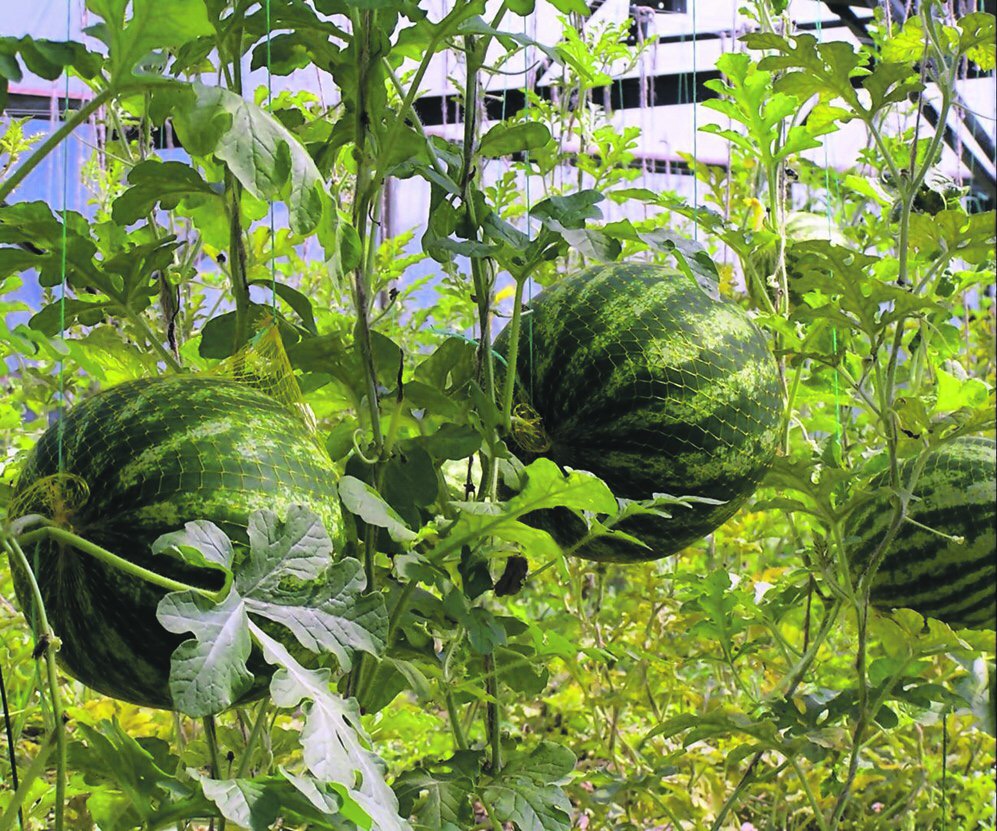
Similar articles:
The right vegetable garden → We grow peppers. Collection of tips
The right vegetable garden → Sevok is a delicate matter
Correct vegetable garden → Garlic. Collection of tips
The right vegetable garden → GOOD TO KNOW about beets
Correct vegetable garden → Mushrooms on the site. The dream of many summer residents
How to Grow a Watermelon in the Leningrad Region?
The first condition is RAPID VARIETY.
We do not have enough warm time for other varieties. From sprout to ripe fruit should not be more than 80 days.
In greenhouses, it is better to grow varieties and hybrids in which the weight of the fruit does not exceed 2-3 kg.
What does a watermelon like?
Good air access to the roots, it is better to sow it on sandy loam, fertile soils, to prevent the formation of a surface crust. Watermelon is a thermophilic plant. The soil should warm up to at least 15-16 degrees Celsius at a depth of 10 cm.
The optimum temperature for seedlings is 25 degrees. At this temperature, the watermelon will rise in a week. For growth and development, a temperature of 25-30 degrees is required.
Watermelon needs good light and should only be grown in a sunny location.
What does a watermelon not like?
Acidic and dense soils.
Avoid planting watermelon on clay or loam. He does not like damp, waterlogged places, cold soils, stagnant cold air, watering with cold (below 20 degrees) water and fresh manure.
Not as top dressing, excessive doses of mineral fertilizers, prolonged cold snap, prolonged cloudy or rainy weather.
Growing watermelons in a greenhouse.
In the spring, as the soil permits, dig a trench in the garden bed on the bayonet of a shovel and add dry hay into it. Put the soil from the trench back into place on top of the hay by placing a board on the soil, walk over it to compact the soil.
The hay will start to rot, giving off heat. After about 2 weeks, you can start sowing watermelon seeds.
Before planting, add a bucket of humus or compost to each square meter of your garden bed. Add half a bucket of sand and a liter can of ash and mix lightly together with the surface layer of soil to a depth of about 10-12 cm.
Mark the holes 40-50 cm apart. Water the garden bed well with warm (at least 25 degrees) water and sow 2 seeds per hole at a distance of 5-6 cm. Cover the crops with halves of plastic bottles on top. Seedlings will appear in about 10 days.
Before sowing, seeds can be germinated at a temperature of 25-30 degrees. Place them on a damp rag and hold until the seeds have hatched 1 to 2 mm. Longer roots often break and die.
Watermelon- climbing vine and requires a garter. He himself does not cling to the string.
It must be tied to a horizontal trellis and from time to time twisted with twine counterclockwise because the watermelon itself does not cling to the string.
When the plants are about 60 days old, they will bloom. First, male flowers appear, and then (after 10-12 days) female flowers. At this moment, they SHOULD BE POLLINATED MANUALLY, since there are no necessary pollinating insects in the northern regions.
You can use the preparations "Ovary" and "Bud" for artificial insemination as soon as the buds of female flowers appear (they have small watermelons).
You can work as a bee yourself. It is especially important not to overlook the pollination of the first flowers. Take a mature male flower with stamens ("barren flower") and carefully insert it into the female one, press it lightly and take it out. On the day the flower opens, the pollen may be immature, pollination may not succeed, and the next day it is necessary to work with the bee again.
Whether pollination has occurred or not, this shows the direction of the ovary. An empty, untied flower stretches upward, and the growing ovary bends downward. And here is the LINK OF THE BEGINNING OF GROWING. When it reaches the size of a plum, you need to quickly remove all unnecessary things so that all your strength is given to the fetus.
Each fruit needs about 10-12 leaves, so once the fruit has set, count 6-7 leaves over the fruit and TIP off the rest along with the crown. This will stop the further growth of the whip.
If there are enough leaves, then it is possible and necessary to cut off all lateral shoots. If there is not enough leaves under the tied watermelon, then leave some of the leaves on the side shoots, but cut off the ends of the shoots.
Only one fruit per plant can be grown in a greenhouse. If you leave two fruits, they will fully ripen, but they will be small. The leaves of watermelons are carved, so they do not shade the fruits and you do not need to cut them to thin out the plants. Stepchildren should be removed regularly.
The watermelon ripens after fertilization in about a month, the place of attachment of the stalk, and then the stalk itself, will begin to dry out. The rind of the watermelon should be glossy and shiny.
When the fruits are about the size of a tennis ball, they must be placed in nets and suspended from a horizontal trellis, otherwise they will break off under their own weight.
If fertilization occurred on the lower flowers, then the watermelons can be laid on the soil by placing a plate under them, otherwise the fruits will rot.
An important addition: watermelons do not tolerate weeds, even a small amount reduces the yield!
How to feed and water?
Watermelon is a drought-resistant plant, it should be watered sparingly.
He loves not watering, but LOOSING. Therefore, it is necessary to loosen the soil under the watermelons weekly, but not deeply, so as not to damage the root system. He has the greatest need for MOISTURE in the INITIAL PERIOD and at the moment of INITIAL GROWTH OF ADHERENCES.
As soon as fertilization occurs, the watermelons will begin to grow rapidly. From that moment on, they need to be watered and fed weekly (1 tbsp. A spoonful of azofoska and superphosphate, 1 tsp. Potassium sulfate and 2 tsp. Micronutrient fertilizers (for example, "Uniflor-micro")).
First, the plants need to be watered with warm water (10 liters of watering can for a five-meter bed), and then feed, giving each plant 1 liter of top dressing. As soon as the watermelons reach the varietal size, watering and feeding should be STOPPED.
You can do differently: before planting, add 506 granules of AVA fertilizer to the hole, or even better, use the powder fraction of this fertilizer (0.5 tsp) and not feed the watermelons with anything all summer, but only water about 1-2 liters of water weekly under watermelon depending on the weather.
What is watermelon sick with?
In the Northwest, watermelons do not have pests other than melon aphids and spider mites, but they are extremely rare.
Of the diseases, the most dangerous is the wilting of plants caused by the soil fungus Fusarium. FUSARIASIS often infects plants during prolonged cold snap (below 12 degrees), prolonged rainy weather or excessive watering.
To prevent the disease, the soil should be watered with Fitosporin solution before sowing seeds. Repeat this watering every 2-3 weeks.
For the prevention of diseases, it is useful to spray watermelons with a mixture of "Zircon", "Epin-extra" and "Cytovita" (take 2 drops of each drug and dissolve everything together in 1 liter of water).
P.S. Friends, do you know how to grow good watermelon seedlings? What seeds? This can be found in my letter, which will come to the mail after filling in the name and email.
Sincerely, Dmitry.
my site:
We have been growing watermelons in the Leningrad Region for the third year already.
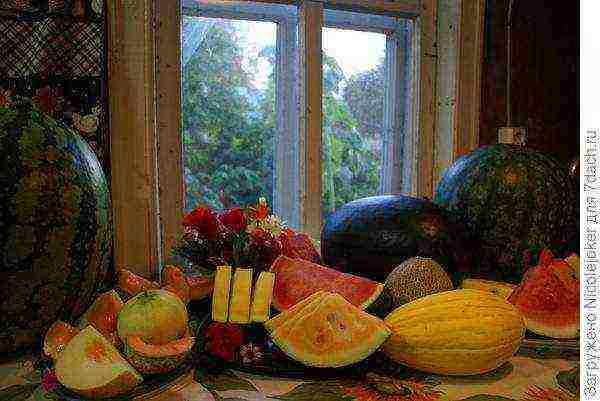
In the first year, I just planted seeds in a greenhouse. I think this is a good option for beginners, but, of course, watermelons will ripen later. It is very important that the ground is already warmed up by the time of planting, otherwise the seeds will simply rot.
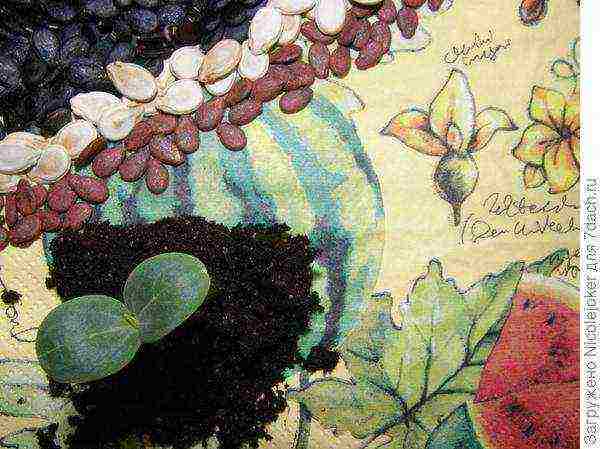
The watermelons in the first year of our melon growing turned out to be wonderful, but the main part was ripe by the end of August, and the heat had already subsided by that time. But watermelons are good to eat in the heat! Therefore, the next year it was decided to plant seedlings.
On May 1, I planted the germinated seeds of watermelons in pots and planted the seedlings in a greenhouse on May 12-15. Already from August 1, we ate watermelons, and some even managed to give a second harvest!
But today I want to tell you about the results of this year, since this year we managed to get an excellent result not only in the greenhouse, but also in the open field of the Leningrad Region.
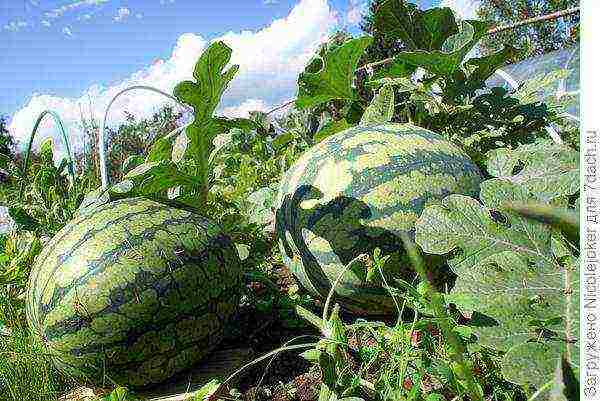
When growing watermelons, it is important to observe the crop rotation, otherwise the plants will get sick. Since this year is already the third for me, and the crop rotation is not easy, I planted almost all watermelons on lagenaria... It is resistant to fusarium, that is, the plants do not get sick, and due to its powerful root, the fruits grow larger. These grafted watermelons are more resistant to cold weather. And if in the greenhouse I had several watermelons growing on their roots (where watermelons had not grown before, remember the crop rotation), then on the street there were only grafted ones.
I planted the seeds on April 25-27, grafted plants in early May, and planted seedlings in a greenhouse in mid-May.
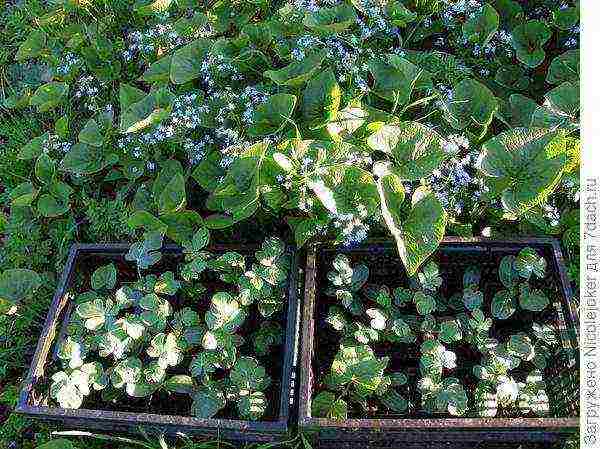
A little later, at the end of May, I planted some of the watermelons on the street. It is advisable that the seedlings are no more than a month old, otherwise the plants will adapt and hurt for a long time.
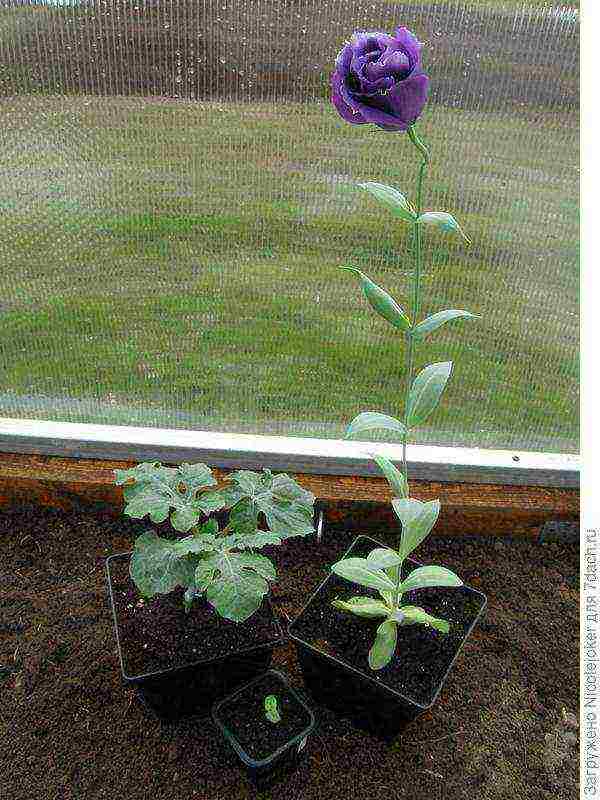
On the street, I covered the ground with a transparent film, it heats up in the sun, and the roots are constantly warm. This is very important when growing watermelons in the open field of the northern regions.
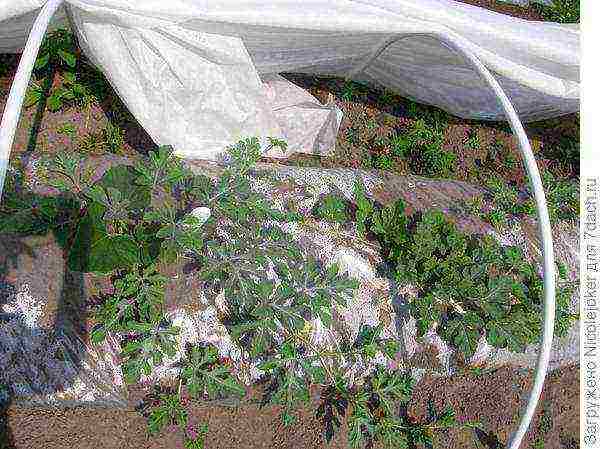
On the street, the watermelons were tied up later, but they grew larger than in the greenhouse. The largest were 13.6 and 13.8 kg.
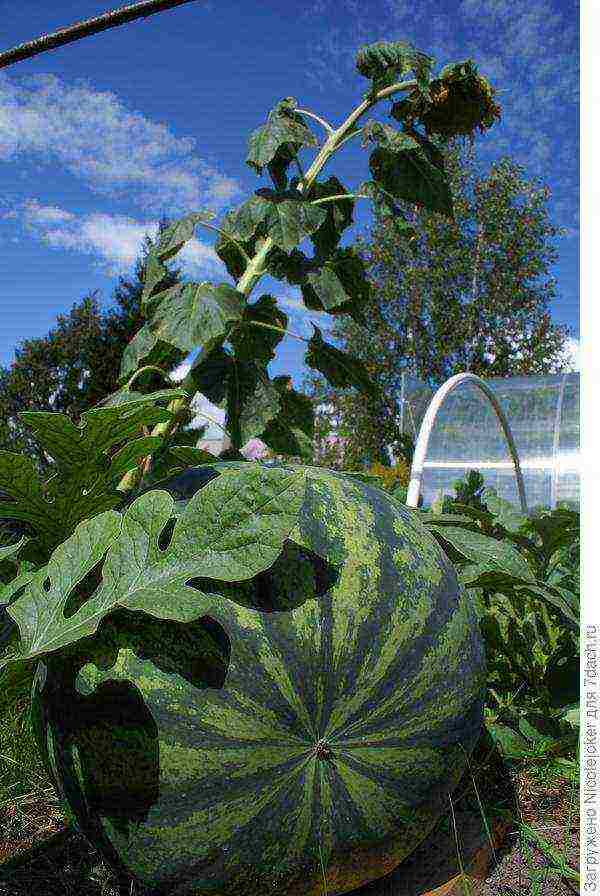
In the greenhouse, I form watermelons, mainly into one main stem, only on some medium-sized varieties I leave two lashes, and then on each lash I have a watermelon.
I delete all stepsons.
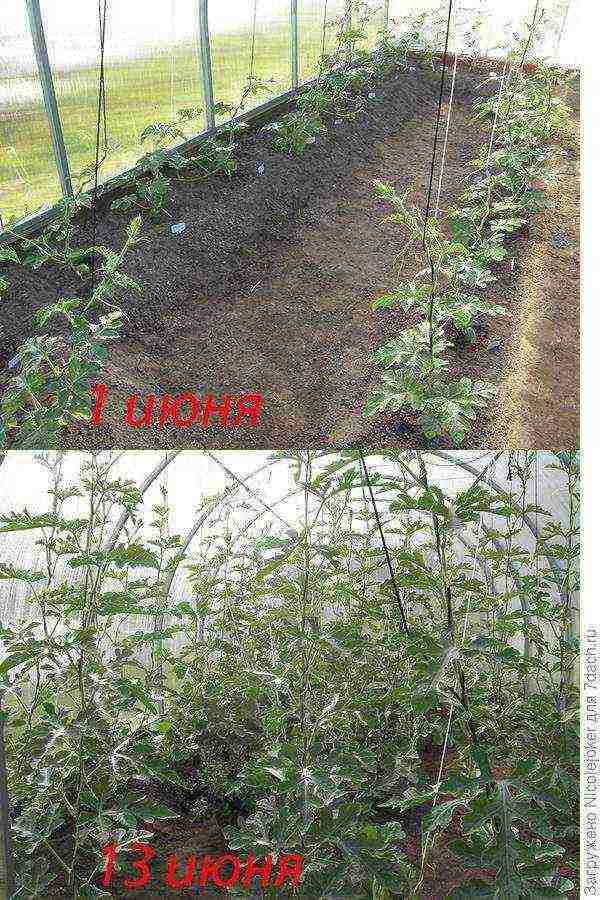
I pollinate by hand, I do not let this important matter take its course.
This is best done in the morning (from 7 to 11). The pollen from the male flower must be transferred to the female one. It is very easy to distinguish one from the other, there is a small ball under the female flower, this is a future watermelon.
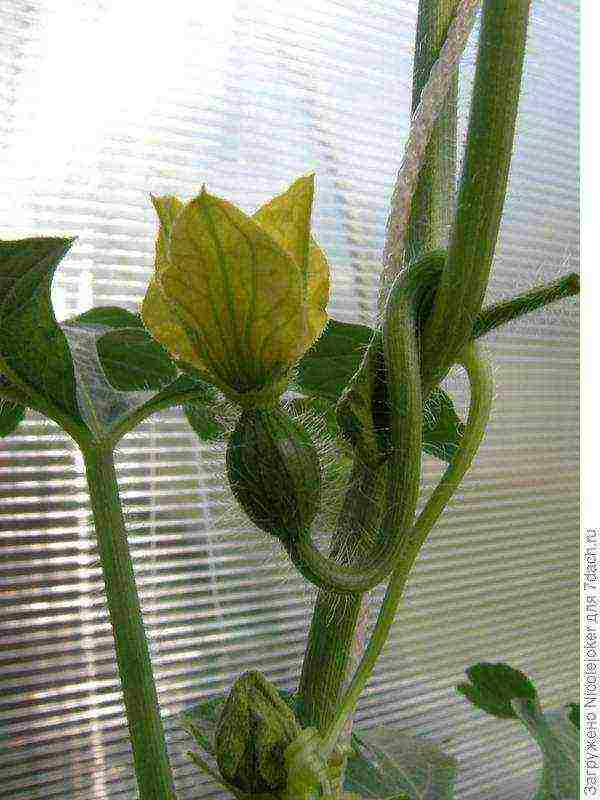
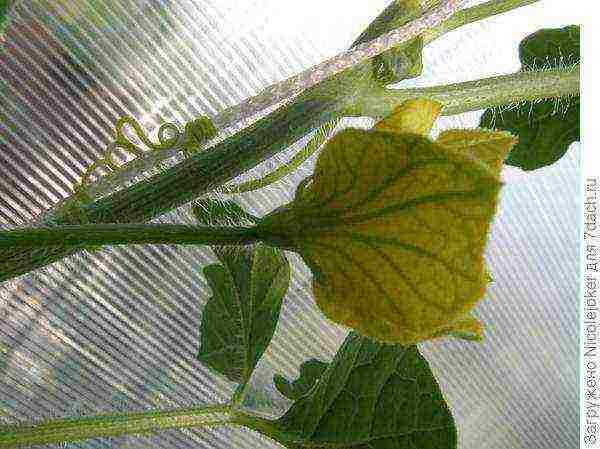
If the watermelon is pollinated, it will start to increase in size very quickly, literally before our eyes! Remember when it happened. This information will be very useful to you later when it comes time to harvest. I have a tag next to each watermelon.

As soon as the fruit reaches the size of an apple, I hang it in the net. And here are the nets, dry, waiting in the wings.

Watermelons must be watered with warm water and not at the very root, watermelons are very sensitive to root rot. It is also extremely important to stop watering on time, otherwise the watermelons will be watery and sugar will not be collected.
As soon as the fruit has reached its varietal size, stopped growing and began to ripen, watering is stopped altogether. This usually occurs 20 days before ripening.
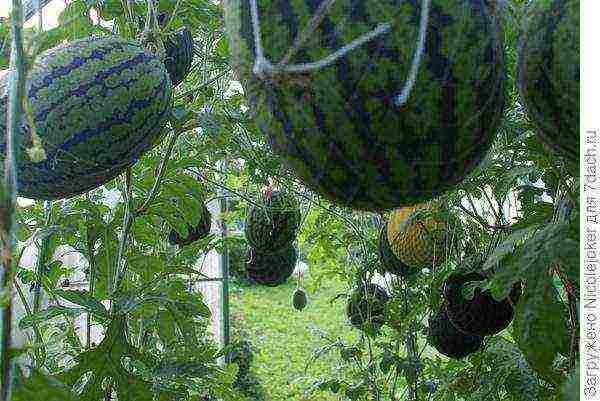

Growing a good watermelon is half the battle, it is very important to remove it on time!
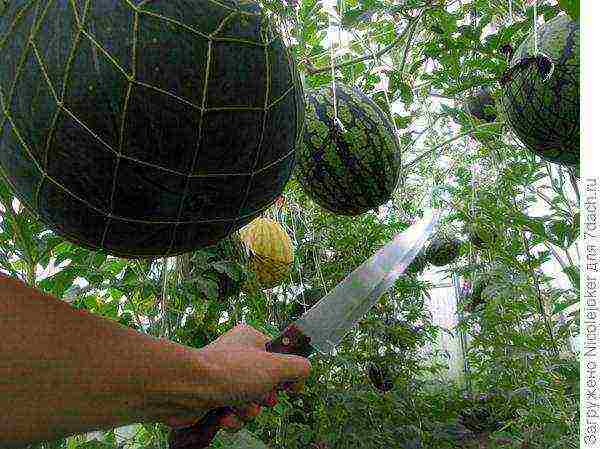
The main factor in identifying the ripeness of a watermelon is the drying of the antennae and spatula. It is on them that they are guided in the first place. We are talking about the antennae (and the mustache of watermelons is about the same as that of cucumbers), located right at the fruit and there will also be a small leaf - a spatula. But it is important to understand that this does not always work, and in practice, the antennae may remain green, and the watermelon is already ripe. Therefore, when determining the ripeness of a watermelon, it is always important to take into account a combination of factors.
I am guided by the timing, so I always write down when the watermelon is tied. And then 40-55 days, depending on the variety and size. But this is in the Leningrad region, in hot regions it ripens in 35 days.
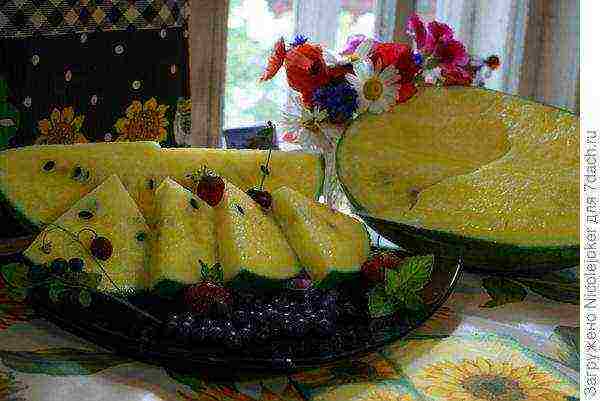

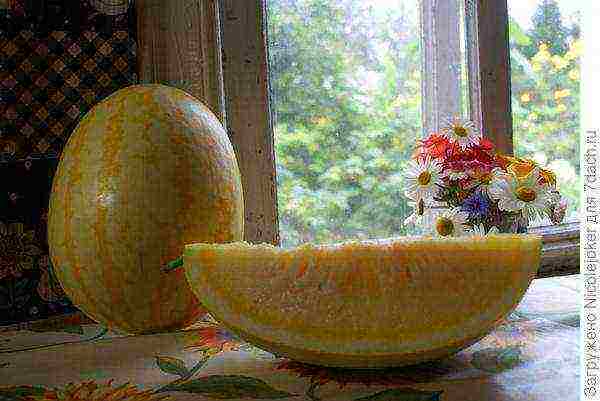
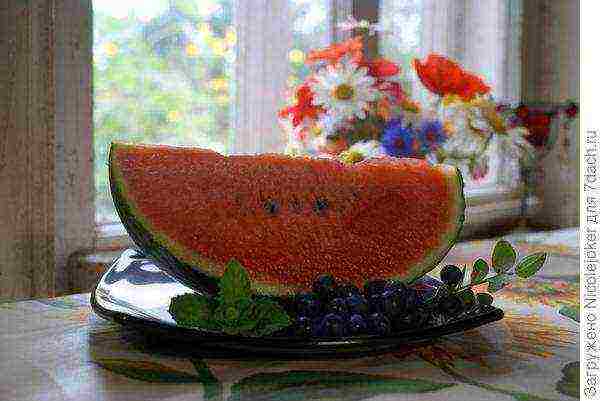

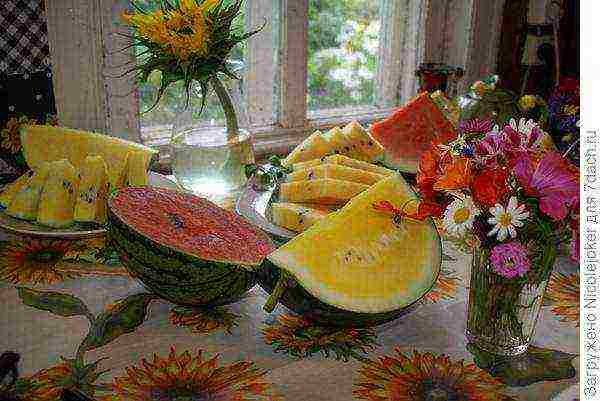
Pay attention to the appearance of the watermelon, the stripes become clearer, the dullness disappears and the gloss appears. You can also navigate by sound, the watermelon should become as if empty inside.
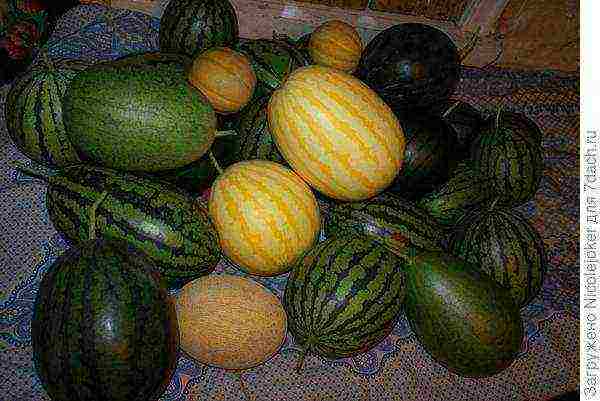
Yellow watermelon smoothie and watermelon honey - nardek.


I wish you all wonderful melon growing and delicious watermelons!
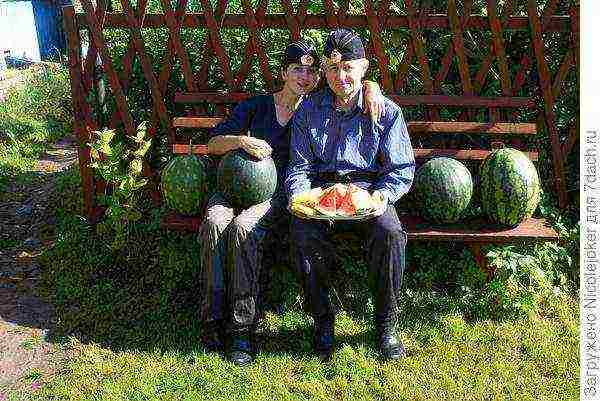
Leningrad region, village Kolenets.
We have been growing watermelons in the Leningrad Region for the third year already. In the first year, I just planted seeds in a greenhouse.I think this is a good option for beginners, but, of course, watermelons will ripen later. It is very important that the ground is already warmed up by the time of planting, otherwise the seeds will simply rot.
The watermelons in the first year of our melon growing turned out to be wonderful, but the main part was ripe by the end of August, and the heat had already subsided by that time. But watermelons are good to eat in the heat! Therefore, the next year it was decided to plant seedlings. On May 1, I planted the germinated seeds of watermelons in pots and planted the seedlings in a greenhouse on May 12-15. Already from August 1, we ate watermelons, and some even managed to give a second harvest!
But today I want to tell you about the results of this year, since this year we managed to get an excellent result not only in the greenhouse, but also in the open field of the Leningrad Region.
When growing watermelons, it is important to observe the crop rotation, otherwise the plants will get sick. Since this year is already the third for me, and the crop rotation is not easy, I planted almost all watermelons on lagenaria. It is resistant to fusarium, that is, the plants do not get sick, and due to its powerful root, the fruits grow larger. These grafted watermelons are more resistant to cold weather. And if in the greenhouse I had several watermelons growing on their roots (where watermelons had not grown before, remember the crop rotation), then on the street there were only grafted ones.
I planted the seeds on April 25-27, grafted plants in early May, and planted seedlings in a greenhouse in mid-May.
A little later, at the end of May, I planted some of the watermelons on the street. It is advisable that the seedlings are no more than a month old, otherwise the plants will adapt and hurt for a long time.
On the street, I covered the ground with a transparent film, it heats up in the sun, and the roots are constantly warm. This is very important when growing watermelons in the open field of the northern regions.
On the street, the watermelons were tied up later, but they grew larger than in the greenhouse. The largest were 13.6 and 13.8 kg.
In the greenhouse, I form watermelons mainly into one main stem, only on some medium-sized varieties I leave two lashes, and then I have a watermelon on each lash. I delete all stepsons.
I pollinate by hand, I do not let this important matter take its course. This is best done in the morning (from 7 to 11). The pollen from the male flower must be transferred to the female one. It is very easy to distinguish one from the other, there is a small ball under the female flower, this is a future watermelon.
If the watermelon is pollinated, it will start to increase in size very quickly, literally before our eyes! Remember when it happened. This information will be very useful to you in the future when it comes time to harvest. I have a tag next to each watermelon.
As soon as the fruit reaches the size of an apple, I hang it in the net. And here are the nets, dry, waiting in the wings.
Watermelons must be watered with warm water and not at the very root, watermelons are very sensitive to root rot. It is also extremely important to stop watering on time, otherwise the watermelons will be watery and sugar will not be collected. As soon as the fruit has reached its varietal size, stopped growing and began to ripen, watering is stopped altogether. This usually occurs 20 days before ripening.
Growing a good watermelon is half the battle, it is very important to remove it on time!
The main factor in identifying the ripeness of a watermelon is the drying of the antennae and spatula. It is on them that they are guided in the first place. We are talking about the antennae (and the mustache of watermelons is about the same as that of cucumbers), located right at the fruit and there will also be a small leaf-spatula. But it is important to understand that this does not always work, and in practice, the antennae may remain green, and the watermelon is already ripe. Therefore, when determining the ripeness of a watermelon, it is always important to take into account a combination of factors. I am guided by the timing, so I always write down when the watermelon is tied. And then 40-55 days, depending on the variety and size. But this is in the Leningrad region, in hot regions it ripens in 35 days.
Pay attention to the appearance of the watermelon, the stripes become clearer, the dullness disappears, and the gloss appears.You can also navigate by sound, the watermelon should become as if empty inside.
Yellow watermelon smoothie and watermelon honey - nardek.
I wish you all wonderful melon growing and delicious watermelons!
Chumanova Tatiana, Leningrad Region, village of Kolenets.


